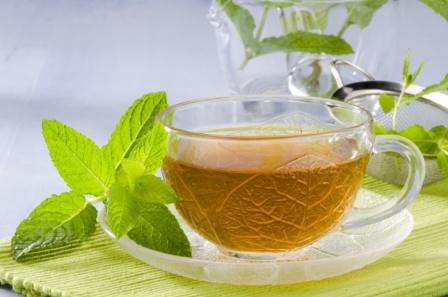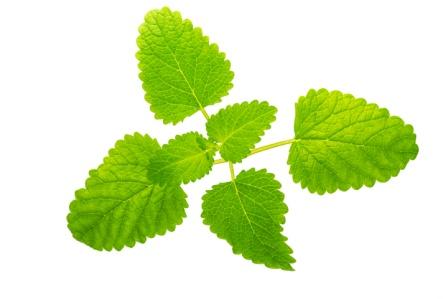Pudina: Medicinal Uses, Remedies, Research, Side Effects
Pudina – Mentha piperita is a plant which is used for the treatment of indigestion, pain in joints, diarrhea, cough, dysmenorrhea and fever.
Latin name- Mentha piperita Linn. Mentha spicata
Family- Labiate (Tulasi kula)

Table of Contents
Vernacular names
Names in different languages:
All the Indian languages like Hindi, Bengali, Kannada, Gujarathi, Malayalam, Tamil, Telugu etc use the name Pudina for the plant. In English the plant is known as Spearmint or Garden mint.
Arabic – Phujanaj
Bengali name – Pudina
Burmese name – Bhudina
Canada – Chetni-maruga
Hindi – Podina
Malayalam – Putina
Marathi name – Pudina
Sanskrit synonyms
Rochani- Improves the taste perception
Pahari- Grow in the cool climate of hills
Pudina, Putiha, Pudina, Podinaka, Phudino, Podina

Morphology
Mentha piperita is a perennial herb growing in the hilly regions or in the cold climatic regions of India. The plant has a strong odor and grows to a height of 1-2 feet. The leaves are slimy, dark and have a strong odor. The flowers are purple in color. Mentha spicata is also used as a synonym for Mentha piperita.
Properties, part used, dosage
Pudina medicinal properties:
Rasa (Taste) – Katu (Pungent)
Guna (Qualities) – Laghu (Light for digestion), Ruksha (Dry in nature), Teekshna (Strong)
Vipaka – – Katu (Undergoes Pungent taste after digestion)
Veerya (Potency) – Ushna (Hot)
Karma (Actions) – Kaphavata shamaka (reduces vitiated kapha and vata dosha)
Part used- Leaf, oil extract
Dosage-
Leaf juice- 5 to 10 ml
Cold infusion- 25 to 30 ml
Oil- 1 to 3 drops
Chemical constituents
Chemical constituents of Mentha piperita:
The major constituents of the essential oil are: menthol, menthone, pule- gone, menthofuran, 1,8-cineole, menthyl acetate, isomenthone. The leaves contain flavonoid glycosides, eriocitrin, luteolin 7-O-rutinoside, hesperi- din, isorhoifolin, diosmin, eriodictyol 7-O-glucoside and narirutin, besides rosmarinic acid, azulenes, cholene, carotenes.
रोचनी वह्रिजननी वक्त्रजाड्यनिशूदनी |
कफवातहरी बल्या चर्द्यर्ह्रोचकवारिणी॥ ( आ. वि)
Uses, Indications
Medicinal uses of mint leaves:
- Pudina is used in many cuisines all over the world, to enhance the taste of the dish.
- The leaves of Mentha piperita is used as carminative and helps in digestion of the food.
- 1-3 drops of oil obtained after the processing from the plant is used with hot water to treat indigestion and relieve colic pain.
- The paste of the leaf of Mentha piperita is applied over the joints to relive pain and localized inflammation.
- Cold infusion of the plant in a dose of 30-40 ml is used to relieve dysmenorrhea and fever.
- The fresh juice of the leaf of Pudina, in a dose of 5 to 10 ml is given with honey to relieve cough and sore throat.
- The paste of the leaf is applied over the skin to relieve the itching sensation and wound associated with pus.
- The distillate of the leaf is extracted and used in a dose of 1 to 3 drops with hot water to treat indigestion and bloating of the abdomen.
- Gargling is done by adding fresh juice of the leaf of Pudina with water to relieve bad odor from the mouth and treat inflammation of the gums.
- The paste of the leaf of Pudina is given with the first morsel of food to treat intestinal worms.
Can mint leaves cause allergies?
Adverse effect
Although it is used in many consumer products, mint may cause allergic reactions in some people, inducing symptoms such as abdominal cramps, diarrhea, headaches, heartburn, tingling or numbing around the mouth, anaphylaxis or contact dermatitis.
Interaction with medicines, supplements
Can this be used while taking Homeopathic medicine?
Yes. This product does not react with homeopathic medicine.
Can this medicine be continued while taking supplements like multivitamin tablets, Omega 3 fatty acids etc?
Yes. Generally, this product goes well with most dietary supplements. However, if you are taking more than one product per day, please consult your doctor for an opinion.
With western
medicines
Seek your
doctor’s advice if you are taking this product along with other western
(allopathic / modern) medicines. Some Ayurvedic herbs can interact with modern
medicine.
If both Ayurvedic and allopathic medicines are advised together, then it is
best to take Allopathic medicine first, wait for 30 minutes and then take the
Ayurvedic medicine.
Ayurvedic medicines
Formulations containing Putiha:
Antharth oil and liniment: It is a proprietary medicine useful to relieve joint pain, reduce morning sickness and localized inflammation after external application.
Appirich syrup: Appirich Syrup is a proprietary Ayurvedic medicine useful as an appetizer in children. It improves taste in food and makes the child feel hungry and eat wel
Calcurosin syrup: It is a proprietary Ayurvedic medicine useful to treat urinary bladder calculi and kidney stones.
Capsin cream: It is a cream used for external application in treating joint pain, muscle spasm and arthritis.
Kofsil syrup: Kofsil Syrup is a non-sedative herbal cough syrup. It is used in the treatment of bronchial asthma, bronchitis, bronchospasm, allergic asthma and smoker’s cough.
Acidowin tablet: It is a proprietary Ayurvedic medicine useful to treat hyperacidity, flatulence, reflux oesophagitis and motion sickness.
Research
Research articles related to Mentha piperita:
Anti-bacterial action: The antibacterial activity of peppermint oil and different extracts of Mentha piperita against some Gram-positive and Gram-negative bacterial strains was evaluated in the present research work by agar well diffusion method. The oil and extracts also exhibited significant antioxidant activity and the oil showed about half potency when compared to the standard BHT.
Anti- diabetic action: The present study was undertaken with an objective to observe effectiveness of oral administration of Peppermint juice in alloxan induced diabetic wistar rats. The present experimental study provides further evidence that oral administration of Peppermint juice for 21 days produced a significant decrease (p <0.0010) in the blood glucose level of alloxan induced diabetic rats.
Wound healing action: The objective of this study was to evaluate the effects of topical Mentha piperita and Cymbopogan citratus oil on wound healing. Diabetic induced infected wound treatment with topical Mentha piperita ointment treatment and their another essential ointment in Cymbopogan citratus wound contraction studies a circular piece08 mm2 in area 20th days compared wound healing study on the wound contraction studies a circular piece 08mm2 in area 18th days highly effective in Mentha piperita ointment.
Anti- fungal action: Essential oil of Mentha piperita was analyzed by GC and GC-MS and evaluated for in vitro antifungal activity against Dreschlera spicifera, Fusarium oxysporum f.sp. ciceris and Macrophomina phaseolin. The oil was found to be effective against these fungal pathogens under laboratory screening. The antifungal activities of the oil increased with an increase in the concentration.
Anti-emetic action in chemotherapy: This study is aimed at determining the efficacy of Mentha spicata (M. spicata) and Mentha × piperita (M. × piperita) in preventing chemotherapy-induced nausea and vomiting (CINV). The treatment and placebo groups applied essential oils of M. spicata, M. × piperita, or a placebo, while the control group continued with their previous antiemetic regimen. There was a significant reduction in the intensity and number of emetic events in the first 24 h with M. spicata and M. × piperita in both treatment groups (p < 0.05) when compared with the control and no adverse effects were reported. The cost of treatment was also reduced when essential oils were used.
Classical categorization
Bhavaprakash Nighantu – Anekaryanam varga
Nighantu Adarsha – Putikaranjadi varga
Dhanavantari Nighantu – Suvarnadi varga
Scientific classification
Kingdom – Plantae
Phylum – Angiospermae
Class – Dicotyledons
Subclass – Asteridae
Family – Labiatae
Genus – Mentha
Species – Spicata
Author: Dr.B.K.Prashanth M.D (Ayu), Ph.D
E mail: drprashanthbk@gmail.com
Sthanika karma (Systemic Acton)
External use
Analgesic, Anti microbial properties. Used as a mouth refresher, Promote wound healing. For bad breath its decoction is used for gargling.
Internally
Digestive system – Improve taste and appetite. Carminative, Anti helminthic and facilitate normal movement of doshas. Indicated in loss of appetite, Anorexia, Vomiting, Diarrhea, Abdominal distension etc. Chutney can be prepared with its leaves.
Circulatory System – Cardiac stimulant
Respiratory system – Expels out vitiated kapha dosha. Indicated in cough, hiccough, asthma etc.
Excretory system – Increases urine production. Indicated in Dysuria
Reproductive system – Constrict the uterine muscles. Juice is indicated in Dysmenorrhea, Purpureal sepsis
Skin – Indicated in skin disorders
Tapakrama -Jvaraghna
Satmikarana – Anti poisonous











14 comments on “Pudina: Medicinal Uses, Remedies, Research, Side Effects”
Ravi
We have all heard of it as a coolant, Isn’t it ?. What is its effect on Pitta ?
Dr J V Hebbar MD(Ayu)
Slightly increases Pitta Dosha.
Lrao
I have an acquaintance just starting chemotherapy. How, where and how often should the pudina oil be applied for preventing nausea during chemo treatments? thank you.
Dr J V Hebbar MD(Ayu)
Put a few drops of pudina oil over kerchief and let the patient smell it for 5 – 10 minutes. This reduces nausea and vomiting.
Vadim
Dr. could you pointed direct refference on pudina in nighantu
Dr J V Hebbar MD(Ayu)
The verse given above is from a book called Ayurveda Vijnana. Sorry that we do not know the exact reference.
Pudina is also mentioned in many places in Ayurveda Sara Sangraha – A Hindi book but approved as one of the authentic Ayurvedic book by Drugs And Cosmetics Act.
Rahul
Can you suggest some good books where sanskrit text mentions of guna dosha of foods/herbs are translated to english? Is there any good book even in Hindi that does this? Except yours and a couple of others websites, absolutely no one backs their guna doshas with text references.
Thank you.
Rahul
Many thanks Sir!
Sagar Kulkarni
Does pudin hara increase Vata?
Dr J V Hebbar MD(Ayu)
No
Dineshkumar
Sir,
Whether the pudhina oil can shrink or remove the nasal polyps.
pls advice.
Dr J V Hebbar MD(Ayu)
Only to a small extent.
C
About it being coolant or increasing pitta, as I understand it, just like very cold things or places can allow for higher pitta and agni (because heat counterbalances cold), strong peppermint can do the same. But there is much talk about peppermint reducing ama, inflammation, and microbes, as well as opening circulation – and all of these things can reduce a fever, cool the skin, etc. But peppermint does increase digestive secretions, in the stomach and liver/gallbladder, etc, lending to pitta.
I have experienced that peppermint oil in excess (or menthol/strong peppermint products) can increase vata after a while. Maybe because of over-strong digestive ability? Strong stimulation? But the herb itself seems to warm vata, and the oil in small amounts. I would like to hear from you Dr. Hebbar to see if any of that sounds right.
What a strange plant!
Dr J V Hebbar MD(Ayu)
Hi, your observation is correct. Due to excessive stimulation, if used for long or in high dose, it can increase Vata Dosha.